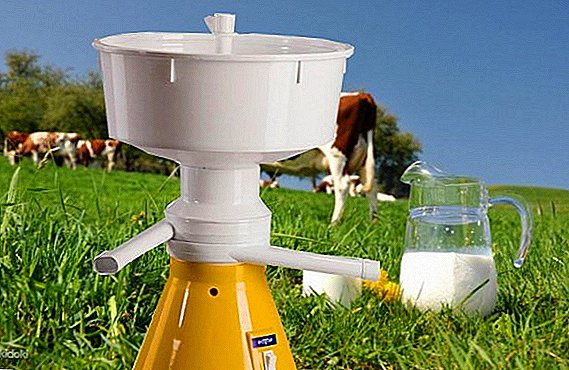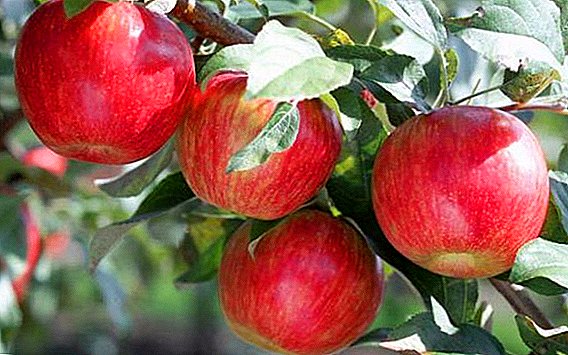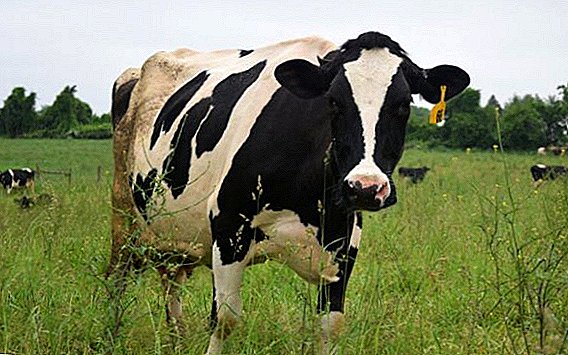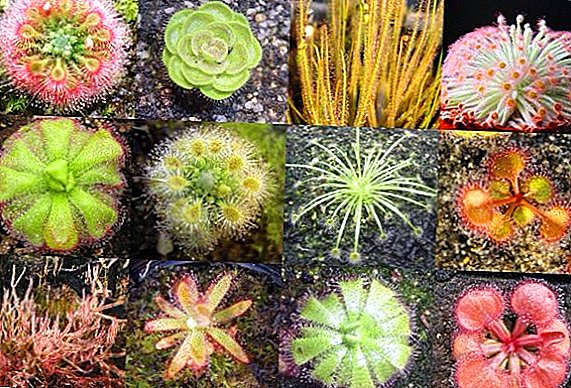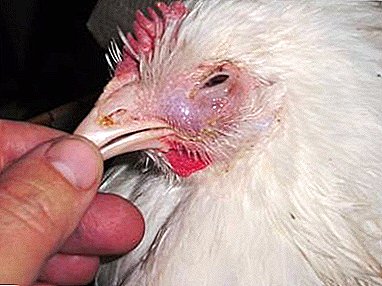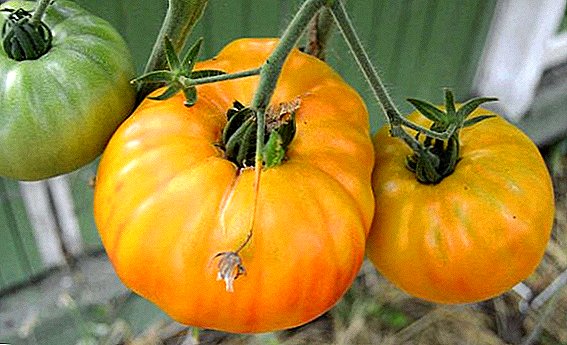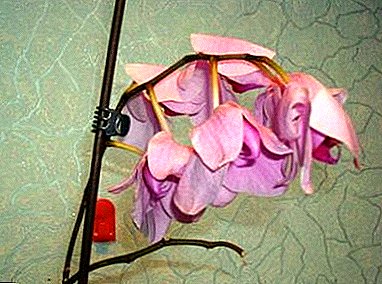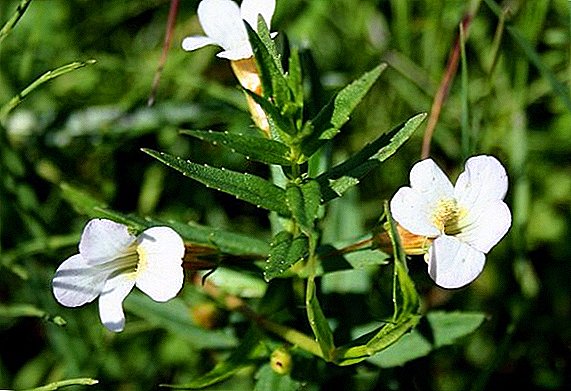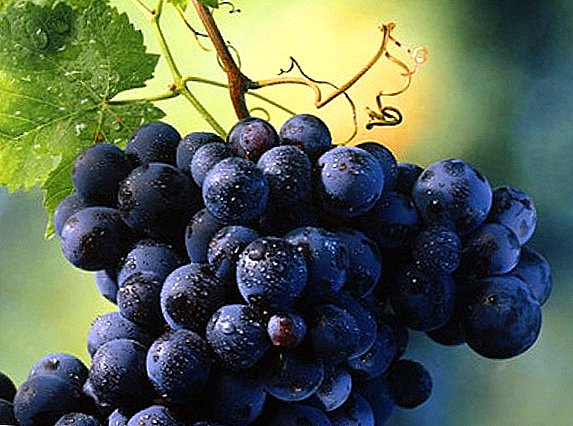 Vines - very thermophilic plants that react negatively to frost. Tender annual shoots will irreversibly die even at low sub-zero temperatures.
Vines - very thermophilic plants that react negatively to frost. Tender annual shoots will irreversibly die even at low sub-zero temperatures.
Old grapes and young vines, which have ripened well, can survive for several days without any harm to themselves and with stronger frosts - but still such stresses are undesirable for them.
Winegrowers divide cultivated vines into covering and not covering. Many summer residents, not wanting to risk, are looking for planting frost-resistant grape varieties that do not need shelter. Indeed, the characteristics of such varieties include frost resistance up to -25 ° C ... -27 ° C ... -30 ° C.
And yet without shelter in such terrible frosts, the vine will certainly suffer. But with more loyal subzero temperatures, grapes can be grown in culture that is not covered for the winter.  We offer a detailed review of the top ten, not covered for the winter varieties.
We offer a detailed review of the top ten, not covered for the winter varieties.
"Jupiter"
Vine is a native of the United States, obtained by scientists, breeders in 1984. In its genes has an admixture of a wild progenitor ("Labruski"). It is this gene that added frost resistance to it. "Jupiter" is an uncovered grape; according to the description, the vine of this variety has a very early ripening period, its flowering occurs 7-8 days earlier than other early ripening. The first ripe fruits on the vine appear 110-115 days after the plant has thrown out the first color. The flowers on the plant are bisexual, which allows it to be pollinated without the help of a person, independently.  Characteristic of fruits of this grade:
Characteristic of fruits of this grade:
- neat brushes of medium size, in the form of a cylinder, gradually tapering;
- the weight of large clusters reaches 400-500 grams;
- the arrangement of the berries in the brush is not dense, rather loose;
- grape form - oval, weight 5-7 grams;
- skin color ranges from cherry to transition to a blue-violet color with full ripeness;
- sweet and juicy berry covers a thin skin, which in the process of growth practically does not burst.
The variety belongs to the second class of seedlessness, although sometimes you can find an unformed bone germ in the pulp. It has an excellent accumulation of sugars and a very original taste: the first ripening berries carry the taste of nutmeg, after a couple of weeks the brushes acquire the tint of “Labruska” (which still does not look like the taste of “Isabella”). Very interesting and unusual taste. Ripened brush is desirable to remove from the vine on time, as the berries tend to turn into raisins directly on the branches of the plant.  Shrubs tend to grow with medium vigor. With timely complex treatments, the plant shows good resistance to the main diseases of the vine, the main part of the shoots of the replacement buds is fruitful. "Jupiter" is not covered for the winter grape variety, which endures frost without loss to -27 ° C. It can be grown both on an industrial scale and in home culture.
Shrubs tend to grow with medium vigor. With timely complex treatments, the plant shows good resistance to the main diseases of the vine, the main part of the shoots of the replacement buds is fruitful. "Jupiter" is not covered for the winter grape variety, which endures frost without loss to -27 ° C. It can be grown both on an industrial scale and in home culture.
Did you know? The Slavic city of Maribor is the proud owner of the world's oldest vine. Biologists have determined that today her age is a little over 450 years old; she’s listed in the Guinness book since 1972. Every year, with this "grape-progenitor" is going to some fruit, just enough to make 25 liters of the rarest wine. Since this wine is produced very little and it is unique, by the decision of the authorities of the city of Maribor, it is served only on particularly significant dates.
"Isabel"
Late grape, which came to us from America in the XVIII century. Grapes with typical size bushes, vine length up to four meters, to full ripeness takes 150-180 days. Small clusters of cylindrical shape, with a loose attachment of berries. Clusters are small, weighing 130-150 grams. With good vine care, the size of the brush increases.
The vine prefers well-fertilized, poorly calcareous soils, normally tolerates a high percentage of moisture in the soil, does not freeze even at frost -29 ° C. It has good resistance to phylloxera and fungal diseases. Unpretentious, it can be successfully grown in any climatic zones, where he has enough warm days to ripen the harvest. This is a suitable grape variety for the Moscow region from those that belong to non-growing cultures.  Characteristics of the berries of this variety:
Characteristics of the berries of this variety:
- grape is round or oval with mucous pulp;
- grape weight 4-4.5 grams, it has a remarkable smell of strawberries;
- the skin of the fruit is durable, not subject to cracking, black with a characteristic bluish tint;
- sweet and sour taste: fruits accumulate sugar up to 18% with an acidity of 6-7 grams per liter.
Check out such grape varieties as Gala, Lily of the Valley, Chameleon, Arched, Riesling, Gourmet, Elegant, Taso, Julian, Chardonnay, Laura "," Harold "," Ruslan "," Buffet "and" In Memory of Dombkovskaya. "
"Lydia"
This mid-season plant belongs to frost-resistant grape varieties, it ripens 150-160 days. Bushes of medium size and medium foliage, bisexual flowers.  Characteristic berries of this variety:
Characteristic berries of this variety:
- fruit brushes of broadly conical shape, medium size, weighing 100-200 grams;
- the structure of the bunch is friable, or with a small density;
- grapes are small, round or slightly weak-oval with mucous pulp and strawberry flavor;
- the fruits are covered with a rather dense skin and are colored maroon-red, they have a light lilac wax coating;
- Vintage begins in late August - September.
The longer the start of the harvest is delayed and the seasoning of ripe brushes on the vine lasts, the better the taste of the harvested grapes. Although the taste of this sort of vine "an amateur." When harvesting you need to remember that the berries "Lydia" weakly cling to the stem and have a tendency to shedding.
Sugar content of "Lydia" within 18-19%, frosts down to -26 ° С do not become critical, normal resistance to mildew and powdery mildew. The variety has an excellent yield, with timely processing from diseases and pests the crop from the bush reaches 37-40 kg. "Lydia" in the southern regions of the country can be grown without shelter for the winter. 
Important! Grape juice is not only a tasty and healthy dessert, but is also recommended by doctors as a remedy with medicinal properties. It is recommended to use for people suffering from weakness of the heart muscle, depression and general decline in vitality. Doctors know that grape juice has bactericidal and soothing properties, has a laxative effect and helps to remove toxins from the body. A person suffering from migraines can relieve a headache by drinking a large cup of grape juice in the morning on an empty stomach. The juice of a wonderful berry helps the body recover quickly after poisoning, stress, or heavy physical exertion.
"Alpha"
The hybrid was obtained by crossing two grape varieties: "Riparia" and "Labrus", the result is impressive with its excellent cold resistance (down to -35 ° C). Plant with late ripening. The vine of this variety has a powerful growth force: the length of the vine during the warm period freely reaches 9 meters and with warm and humid temperatures it increases too many stepsons, which must be cleaned. Variety technical appointment.
Flowering varieties begins with the first decade of June, bisexual flowers are located two or three inflorescences on one shoot. Grape growers use the "Alpha" variety as an ideal pollinator when growing other grape varieties in monoculture. In the southern regions, where the freezing temperatures do not fall below -12 ° C frost, the vine can not be covered for the winter. 
Description of the harvest of this variety:
- bunches are ripe rather late, their ripening period stretches from 110 to 145 days;
- the average size of the brushes is 150-180 grams, if the yield is small - the size of one brush can be increased to 250-280 grams;
- grape shape - round, average weight 2-3 grams;
- skin color black and blue with a characteristic bluish wax bloom;
- the taste of the berries has a nutmeg flavor and rather sour pulp. The explanation for this can be that "Alpha" belongs to the technical group of grape varieties and sugars are recruited up to 16% when typing acid 10-11 g / l;
- the average harvest reaches 14-15 kg from one bush;
- usually ripe clusters are removed from the vine in late September.
Important! In Europe, there is such a branch of medicine, as "viticulture" or "ampelotherapy". The course of treatment with grapes, according to some doctors, is equivalent to a full course of treatment at a spa with mineral waters.
"Platovskiy"
In the process of carrying out breeding works with varieties "Zaladende" and "Present Magaracha" grapes "Platovsky" was obtained. Its author was the Russian scientist Ya. I. Potapenko.
Grapes "Platovsky" does not strike with the sizes, the description of a grade more likely carries it to plants of average force of growth. It is quite easy to clean: it is easy to tie and mulch. Grapes of technical purpose and medium ripening, the first ready-to-eat clusters can be removed after 110-115 days. The recommended load on the bush "Platovsky" - five to six kilograms of berries. 
Yield characteristic:
- grape brush has a classic cylinder shape, gradually extending to the cone;
- medium-sized clusters with an average weight of 180-200 grams, consisting of small (up to 2 grams) perfectly round berries;
- white juicy flesh is covered with thin whitish skin, with high humidity prone to cracking.
The grape flank turned to the sun as the ripening of the grapes becomes covered with a gentle flush. The taste of "Platovsky" is harmonious - gourmets will appreciate a balanced combination of sweetness and acid.
The resulting berries of this variety are used to make dessert and table wines with excellent taste, juices, compotes. In home culture, Platovskiy is grown to a greater extent for the consumption of very tasty fresh grapes. The frost resistance of the variety is remarkable, the vine can withstand temperatures down to -30 ° C with a normal dry shelter.
Did you know? The vine is one of the very first plants that man began to grow. It happened in about 5-6 millennia BC. You can meet grapes in the most unexpected corners of the Earth. This culture has more than 8,000 varieties, which, for convenience, people have divided into four main types: table, wine, raisin and varieties for making sweet juices.
"Amethyst"
The vine was bred by A. I. Potapenko, European and Amur varieties were taken as the basis for obtaining a hybrid. The result obtained is called "Amethyst" and is a technical grade with a very short period of maturation of the brushes.  Liana very quickly and powerfully gaining growth, prone to the rapid growth of stepchildren, which must be pinned in the early stages of the growing season, as the young shoots pritenyayut bush and increases the likelihood of the disease mildew or gray rot. With a good foliage, "Amethyst" fastens two or three large berry brushes on each young vine left for fruiting.
Liana very quickly and powerfully gaining growth, prone to the rapid growth of stepchildren, which must be pinned in the early stages of the growing season, as the young shoots pritenyayut bush and increases the likelihood of the disease mildew or gray rot. With a good foliage, "Amethyst" fastens two or three large berry brushes on each young vine left for fruiting.
Harvest Description:
- clusters are formed with an average density of attachment of berries;
- the brush has the classical form of a bunch of grapes;
- the weight of one brush reaches 300-340 grams;
- grapes of elongated round-oval shape, diameter of the berry is 12-13 mm;
- juicy pulp with a pleasant sweet taste, the presence of sugars up to 21-22%;
- strong skin with a dark purple color, there is a dense whitish wax coating;
- it is an early ripe grade - the first ripe brushes are removed from the bush in the twentieth of August.
 "Violet" gives a guaranteed and stable ripening of young shoots. Pruned "Amethyst" is not very strong, experienced gardeners recommended average pruning for 4-6 eyes. Good disease resistance (mildew, gray rot, oidium), but only if timely and repeated prophylactic treatment of the bushes with antifungal drugs. "Violet" has an enviable resistance to low temperatures down to -32 ° C frost. These grapes are eaten fresh, they produce good dry wines and juices.
"Violet" gives a guaranteed and stable ripening of young shoots. Pruned "Amethyst" is not very strong, experienced gardeners recommended average pruning for 4-6 eyes. Good disease resistance (mildew, gray rot, oidium), but only if timely and repeated prophylactic treatment of the bushes with antifungal drugs. "Violet" has an enviable resistance to low temperatures down to -32 ° C frost. These grapes are eaten fresh, they produce good dry wines and juices.The grape varieties such as "Kesha", "Monarch" and "Amursky" have a high content of juice, which is an important condition for making wine.
"Ontario"
The variety is obtained as a result of the work of American breeders for crossing grapes "Diamond" and "Winchel". The adult plant has a bush of average size with the average level of productivity and technical characteristics. "Ontario" has good resistance to negative temperatures, with normal shelters tolerates frosts above -30 ° C without the slightest damage to the hibernating vine.  Description of brushes:
Description of brushes:
- cylindrical brushes with an average weight of berry brush of 200 grams;
- grape of a round form, the mass of a berry reaches 3-3.3 grams;
- in technical ripeness of a white-green berry, as the berries ripen, the peel acquires a golden hue;
- berry juice is sweet, with a harmonious taste, without too much astringency (sugar content 17-20%);
- Harvesting begins from the last decade of September and lasts for 14-20 days.
Grapes showed excellent resistance to major diseases of the vine, especially mildew. "Ontario" is a table variety and is used both in canteens and technical purposes. Excellent taste and good keeping quality of brushes made it a good option for fresh consumption and transportation over long distances. It is used to prepare table and dessert wines and juices.
Did you know? The Bible allowed to eat Snails during Lent. Medieval monks, who knew Scripture well, created a farm for growing snails at monastic vineyards. Cleverly prepared snails in combination with spicy herbs contributed a pleasant variety to the meager monastic food.
"Venus"
This grape came to us from the United States, it is a sultry (a seedless berry), the crop on this vine ripens very early - in 100-110 days. "Venus" is characterized by powerful and spreading bushes with good foliage. In industrial vineyards, the yield of "Venus" ranges from 200 to 270 centners per hectare. Vine has an average resistance to oidium and mildew. Experienced winegrowers recommend that fungicides be treated at all stages of the growing season for Venus:
- the first treatment is before the kidneys swell;
- second treatment during flowering;
- the third treatment immediately after flowering;
- the fourth is carried out 2 weeks after the end of flowering.
 Characteristic berries:
Characteristic berries:- large and medium brushes up to 350-500 grams;
- berry brush shape - cylindrical with medium friability;
- the first ripe berries appear in the second decade of August;
- round grape size - medium, up to 4 grams, with blue skin;
- fleshy sweet-sour flesh with a slight aftertaste of chokeberry;
- set of sugars in fruits up to 18-20% with a total acidity of 6-7%.
Venus has the first class of seedlessness and good resistance to cracking of fruits. Young shoots mature well during the season. For fruiting shoots need gentle pruning, no more than 4-6 eyes. The plant in winter shelters normally tolerates severe frosts (-28 ° C), in the southern regions Venus is recommended for cultivation in a culture that is not sheltered for the winter.  Berries are used for fresh desserts, making raisins, juice and a variety of wines. Due to harmonious taste, they are in good demand at the stores.
Berries are used for fresh desserts, making raisins, juice and a variety of wines. Due to harmonious taste, they are in good demand at the stores.
Learn more about how to transplant, stepchild, plant and cut grapes in the fall.
"Vatra"
The variety was bred by Lviv breeder Pavly BM in 2002 on the basis of Shakhtar grapes. The Vatra grape resulting from the selection works has very early ripening, the first brushes are to be removed in 110-120 days. This is one of the most cold-resistant grape varieties in Ukraine. In the conditions of cultivation in the Poltava region harvesting begins July 30 - August 8. Vigorous bushes need to be pruned, using pruning by plant growers and the formation of a load on the fruit-bearing bush. The shape of flowers - oboyepoly.
Characteristic of bunches:
- brush cylindrical shape (classic), medium friability;
- huge grapes are poured up to 750-800 grams;
- grapes are very large, round or implicitly oval in shape and with a mass of 8-10 grams of berries;
- berry pulp consistency - jelly, dark color,
- taste is harmonious, sweet, very pleasant;
- the first ripe brushes are ready for removal on July 27-30;
- skin color dark cherry;
- the cover on the berries is dense, but not bursting and not felt when eating.
Brushes "Vatry" not showered when perestaivanii on the bushes - on the contrary, the crop can be stored on the branches for a long time (in the process accumulating sugar). General harvest occurs in the first decade of August. Willingness to harvest depends on the loading of the vines and on how warm the summer is. 
Andronov's Oasis
The grapes were obtained in 2011 by a Ukrainian breeder from the city of Melitopol - A. V. Andronov. "Oasis" ripens very early: from the beginning of flowering to full ripeness, 105-110 days pass. Кусты очень быстро растут в высоту и ширину и нуждаются в своевременном формировании плодового рукава. Цветы на лозе преимущественно женского цветения."Oasis" has already established itself among winegrowers as super-subglobal, cuttings from its vine take root almost completely. Perhaps even cuttings from thin green twigs with a diameter of 2-3 mm. The vines grafted on the “Oasis” are almost twice as fast as they begin to bear fruit. Excellent vine ripening.  Characteristics of the fruit:
Characteristics of the fruit:
- brushes of average size (weighing 200-300 grams);
- bunch shape conical, up to 25 cm, srednerylaya;
- ideally round black berries weighing 3-4 grams with a subtle melting taste of tender pulp;
- the skin is not rough, when eating does not interfere;
- the first ripe bunches can be removed at the end of July - the beginning of August.
These are grapes of technical and stock use. It has excellent frost resistance (in the presence of winter shelters) and survives frost down to -30 ° C without damage for fruiting buds.
The recommended maximum load on the bush is 30-35 holes. Shrubs are subject to medium pruning fruit-bearing vines (3-4 eyes). Yield varieties all the years of cultivation is kept at a stable and very high level. The "oasis" of the breeder Andronov is appreciated by the growers and included in the list of cold-resistant grape varieties.
Each farmer must decide for himself, with an eye to the region in which he lives, whether he should shelter his vineyard for the winter. If the summer resident is lucky enough to get a remarkably frost-resistant grape variety, it is better not to find out whether the variety will survive in the frost stated in the characteristics or not. You just need to devote one day to work in the late autumn: take care of your vegetable pets and carefully cover them for a safe winter.  Big and tasty harvests to you!
Big and tasty harvests to you!


